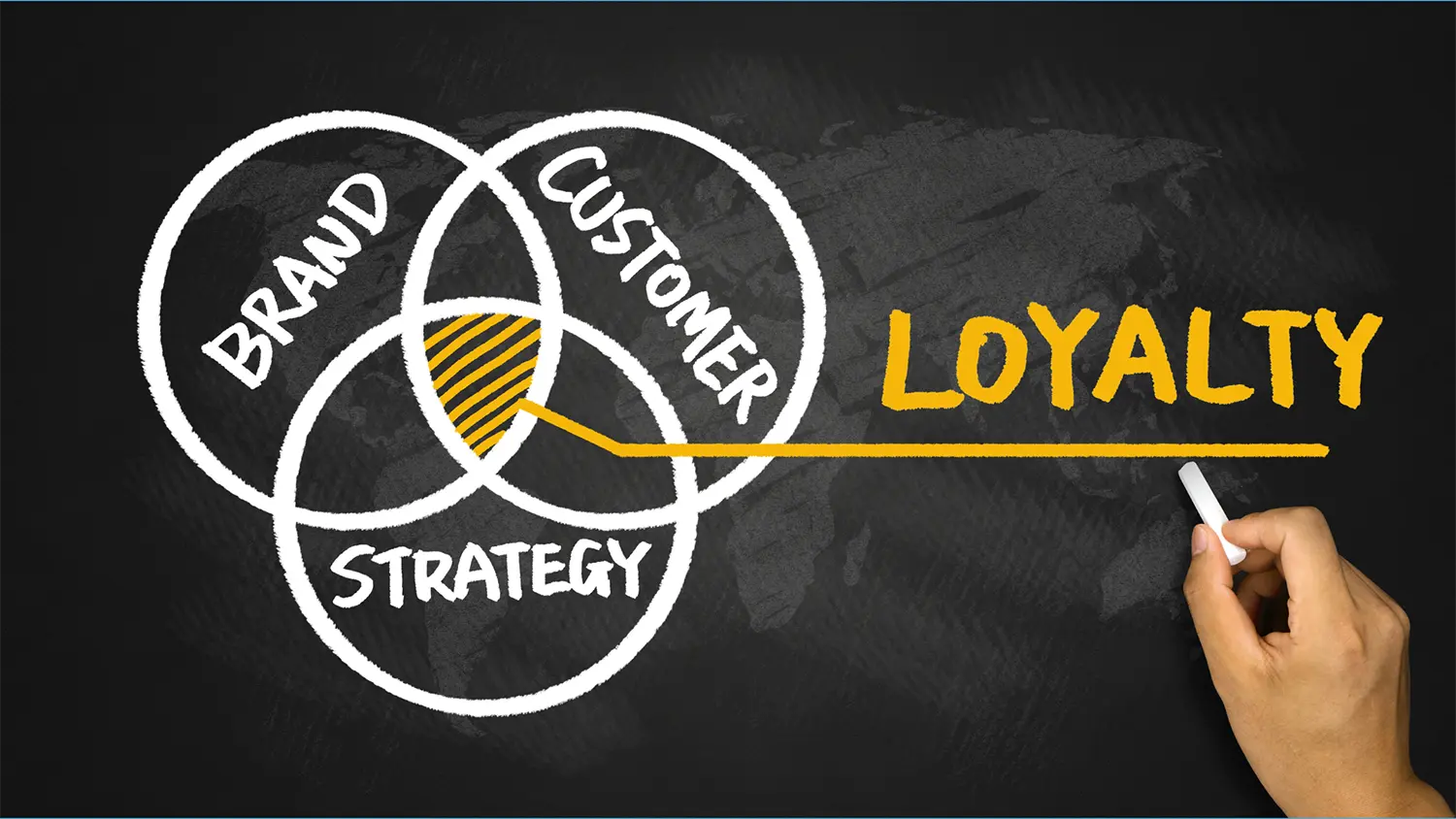
Picture a laser beam cutting through some fog – precise, focused, and impossible to ignore. That's the power of targeted marketing campaigns in a world cluttered with generic advertisements. Gone are the days of casting wide nets and hoping for the best. Effective businesses now wield marketing strategies as finely tuned instruments, reaching out to exactly who needs to hear their message. Targeted marketing is a powerful tool that lets you deploy advertising to relevant market segments across all your channels to personalize ads at scale. But what makes these targeted campaigns so effective? Why are they outperforming traditional blanket approaches? From skyrocketing ROI to fostering genuine customer connections, targeted marketing reshapes how businesses communicate.
If you want to increase your department or company results, building targeted marketing campaigns with the help of a marketing operations consultant could be your answer for long-term success. Targeted marketing has become a key strategy in any digital marketer's playbook. Technology has advanced to make it easier, and consumers have come to expect it whether consciously or subconsciously. Think about it, a single ad spread across a wide variety of different people is less likely to convert than a wide variety of personalized ads based on unique user engagements. Whether the customer actively thinks about it or not, the platforms we advertise on will actively and automatically test and select for the best result based on that user's past behavior. The good news for businesses and marketers is that targeted marketing is much easier to engage in than it was ten years ago. The tools and evolving marketing channels can be optimized for stellar targeted marketing campaigns to help keep your business in the black.
What is targeted marketing?
What is targeted marketing?
Targeted marketing is a strategic approach that focuses on identifying and reaching specific segments of consumers who are most likely to be interested in a company's products or services. Unlike mass marketing, which casts a wide net to reach as many people as possible, targeted marketing tailors its efforts to particular groups based on various characteristics, behaviors, or engagement metrics. Evaluating and examining different market segments against your intended product or service, helps businesses identify the best available audience for their targeting. This evaluation ultimately results in selecting one or more market segments before entering them. A targeted marketing strategy is really about determining the overall direction of the business and the efforts that are going to be made in the future.
Targeted marketing is the preferred strategy by consumers. When allowed to pick between random or targeted advertisements, over 40% prefer the latter. Additionally, behavioral-data-based ads were shown to be the most effective – their clickthrough rate was up to 5.3x higher compared to other approaches. Companies that offer specialized products or services benefit the most from targeted marketing strategies. Focusing marketing efforts on specific groups more likely to respond increases the chances that the marketing efforts will be relevant to those groups. When marketing is relevant, people are more likely to spend money on that service or product.

Targeted marketing typically provides specific information and incentives to people, giving them a reason to choose that company over competitors in the same industry. For example, Starbucks currently holds the largest market share of the coffee industry in the United States. The company focuses its advertising on women and men between the ages of 25 and 40 who live in urban areas, have moderately high income and professional careers and demonstrate an interest in fair trade and social welfare. Starbucks bets that these key groups are more likely to spend money on specialty coffee drinks and products.
In addition, Starbucks targets young people between 18 and 24 by providing a comfortable, appealing place where they can sit and chat, study, or work. Starbucks also stays active on social networking websites, further appealing to the 18-to-40 demographic. This encourages younger adults to "follow" Starbucks on social media sites, increasing brand awareness and encouraging people to spend their time (and money) at Starbucks locations.
Difference from Mass Marketing
- Mass marketing aims to reach the largest audience possible with a single, uniform message. It assumes that all consumers have similar needs and preferences.
- Targeted marketing recognizes that different consumer groups have distinct needs, preferences, and behaviors. It customizes marketing efforts to appeal to these specific segments.
Key Components of Targeted Marketing
- Market Segmentation: Dividing the overall market into distinct groups based on shared characteristics.
- Audience Profiling: Creating detailed profiles of ideal customers within each segment.
- Personalized Messaging: Crafting tailored messages that resonate with each target group.
- Channel Selection: Choosing the most effective marketing channels to reach each segment.
- Data Analysis: Continuously analyzing campaign performance and customer data to refine targeting strategies.
Types of audience segmentation
Types of audience segmentation
You can employ many different types of audience segmentation to aid your digital marketing campaign. Each comes with a unique set of benefits for different businesses. Use the personas you build about your target market to identify potential segmentation tactics to use. Then, deploy several tactics and test the differences in outcomes between the options to find the best fits for your products or services.
Affinity Audiences
Affinity Audiences
- Based on long-term interests and lifestyle choices
- Helps reach people passionate about topics related to your product or service
- Allows for targeting based on hobbies, values, and personal preferences
Life Events
Life Events
Life events audience segmentation surrounds those currently or about to experience a significant life event or change. This targeting approach capitalizes on the fact that major life events often trigger new purchasing behaviors and needs. Major life events are infrequent, so there is a smaller audience reach due to strict timelines, but it is highly targetable.
Key Features:
- Targets users during transitional periods in their lives
- Highly relevant for products/services related to specific life stages
- Can lead to high conversion rates due to timely targeting
For example, if a person gets engaged, they will be actively looking to purchase things related to weddings. This makes it a perfect time to show them advertisements for flower shops, dresses, nice suits, venues, and more. Their demand for wedding-related items and services will last anywhere from a few months to a few years, depending on when they schedule their wedding.
Customer Match, Remarketing & Lookalike Audiences
Customer Match, Remarketing & Lookalike Audiences
Customer match audiences allow a business to use their online and offline data to reach and re-engage with existing or previous customers. This requires businesses to use the information provided by customers to ensure they see targeted ads. Remarketing and 1st party data are key in making sure this form of advertising is successful. Remarketing focuses on re-engaging users who have previously interacted with a brand's website, content, or ads.
Key Features:
- Targets users already familiar with the brand
- Can be customized based on specific user actions or pages visited
- Effective for reducing cart abandonment and increasing conversions
Similarly, lookalike audience segmentation automatically finds new customers similar to a company's existing customers. This process presents an opportunity to create impressions on people who share similar characteristics to your existing customers and those on your remarketing and customer match lists. While the latest privacy compliance laws make this type of advertising a little less effective, you are certainly allowed to use 1st party data on some ad channels to find new customers that share specific demographics to your existing audience.
Demographic & Detailed Demographics
Demographic & Detailed Demographics

Demographics include all your basic identifying information, such as age, gender, education level, marital status, race, religion, income level, and more. This data is easy to obtain and categorize because there are only a handful of options for each category.
Detailed demographic segmented audiences allow companies to reach large portions of a population that share a common, specific trait. Detailed demographics provide a more granular approach to demographic targeting, allowing businesses to reach specific subsets of the population based on detailed characteristics.
Key Features:
- Goes beyond basic age and gender demographics
- Includes factors like parental status, household income, and education level
- Allows for more precise targeting within broader demographic groups
Benefits of Targeted Marketing
Benefits of Targeted Marketing
Targeted marketing offers a multitude of advantages that can significantly enhance a company's marketing efforts and overall business performance. By focusing on specific audience segments, businesses can achieve more efficient and effective results compared to traditional mass marketing approaches. Advertising, customer experience, business operations, and branding — can all be impacted by taking a personalized approach which is primarily driven through the personas from your targeted marketing. With proper targeting, you can achieve the following:
Improved ROI and Cost-Effective Campaigns
Improved ROI and Cost-Effective Campaigns
One of the most compelling benefits of targeted marketing is its ability to deliver a higher return on investment (ROI). Unlike broad-based marketing campaigns that cast a wide net, targeted marketing concentrates resources on the most promising prospects. This focused approach significantly reduces wasted ad spend by ensuring that marketing efforts reach individuals who are more likely to be interested in the product or service. As a result, conversion rates tend to be higher, as the message is tailored to resonate with the specific needs and preferences of the targeted audience.
With targeting, marketing becomes more affordable, efficient, and effective at generating customer leads. Saving money on marketing and a better return on investment are the most obvious benefits of targeted marketing — especially for small businesses with frugal marketing budgets. This relevance not only increases the likelihood of engagement but also of conversion, leading to a more efficient use of marketing budgets. By allocating resources to the most receptive segments, businesses can maximize their marketing impact and achieve better results with potentially lower overall spend. Targeted marketing is far more cost-effective than mass marketing as firms are not wasting time and money marketing to people who will never be a customer. Instead, the target audience is specific consumers who are most likely to become customers.
While the initial setup of a targeted marketing strategy may require more resources in terms of data collection, analysis, and campaign creation, it often proves more cost-effective in the long run. By focusing on high-potential customers, businesses can significantly reduce waste in advertising spend. Instead of paying to reach a broad audience that may include many uninterested individuals, targeted marketing ensures that resources are directed towards those most likely to convert. This focused approach typically leads to higher conversion rates, resulting in better overall campaign performance and a more favorable cost per acquisition.
Additionally, targeted marketing allows for continuous optimization based on detailed performance data. As campaigns progress, marketers can analyze results at a granular level, identifying which segments respond best to which messages. This data-driven approach enables ongoing refinement of targeting strategies, further improving efficiency over time and ensuring that marketing budgets are used in the most effective manner possible.
Better Customer Engagement through Understanding Customer's Needs
Better Customer Engagement through Understanding Customer's Needs
Targeted marketing fosters stronger connections with customers by tailoring messages to specific audience segments. This personalized approach ensures that the content resonates more deeply with recipients, as it addresses their unique interests, needs, and pain points. When customers receive communications that feel relevant and personalized, they are more likely to engage with the brand.
The target marketing process provides a basis for understanding customers' needs by grouping customers with similar characteristics together and selecting the target market. Segmentation allows marketers to more precisely define customer needs and expectations within their advertising.
Marketers improve their understanding of how, why, and what influences customer buying. Being in touch with customers increases their responsiveness to changing needs and allows for better marketing programs.
The result is increased engagement that can manifest in various ways, such as higher email open rates, more social media interactions, or increased time spent on a company's website. Moreover, targeted marketing facilitates more meaningful conversations and relationships with potential clients. By demonstrating an understanding of the customer's specific situation or preferences, businesses can build trust and credibility, laying the foundation for long-term relationships and increased customer loyalty.
Brand Recognition & Better Customer Loyalty
Brand Recognition & Better Customer Loyalty

When you avoid speaking to everyone in the market and concentrate on a specific audience, you begin to stand out from competitors. Be sure to market your brand so specific customers that match the targeted profile can easily identify you. Customers who recognize your brand are more likely to buy from you, especially if they've had a positive experience. Use your top position in the market to ensure your brand remains unique and well-known.
Targeted marketing is a powerful tool for fostering brand loyalty and deepening customer engagement. By tailoring messages to specific audience segments, businesses create personalized experiences that resonate deeply with recipients. This approach transforms customers from mere statistics into valued partners in the brand's journey. When individuals consistently receive relevant offers and communications that address their unique interests, needs, and pain points, they develop a stronger appreciation for the brand. This appreciation stems from feeling understood and valued, rather than being treated as just another face in the crowd.
The ongoing, personalized interaction establishes the brand as a trusted ally in the customer's life, reinforcing brand values and positioning in their minds. As customers sense that their feedback and preferences are not only heard but actively utilized to refine marketing strategies, they become more invested in the brand's success. This symbiotic relationship leads to increased customer retention, higher engagement rates, repeat purchases, and positive word-of-mouth recommendations. Ultimately, targeted marketing creates a virtuous cycle of loyalty and engagement, where each personalized interaction strengthens the bond between customer and brand, driving long-term business success.
High-Quality Leads and Better Products or Services
High-Quality Leads and Better Products or Services
When you talk directly to the target audience, you can attract real customers to your business. Targeted marketing campaigns that actually reach the specific group you wish to engage with makes lead outcomes more clear and helps ensure the advertising and channels in use are the right ones. When you target correctly, you're more likely to get quality leads that can turn into potential customers. No marketer likes it when sales turns back leads as invalid, uninterested, or straight spam. By using targeting marketing, you can reduce the rates of bad leads and rebuild trust in your sales pipeline.
The target market focused customer-brand interactions that your business creates also help in product or service development. When you're finding the right customers, you get a clear insight into what those customers want and don't want, along with helpful suggestions on making your offerings even better. Knowing your audience more deeply means you'll start to edge out the competition by developing better products and services that better align with the target audience needs. You'll offer features and add-ons that customers are looking for but can't find elsewhere. It's about putting yourself in their shoes and delivering the best products and services based on what they truly want, not just what you think they want.
Difference Between Targeted Marketing from other forms of Marketing
Difference Between Targeted Marketing from other forms of Marketing
The simple explanation to define the difference between targeted and mass marketing is that mass marketing tries to reach as many people as possible. In contrast, targeted marketing attempts to reach a specifically defined and profiled audience. Both of these methods can be an effective marketing route and can drive a business's leads and sales.
Mass marketing can be more expensive; the message must be stated in the most basic form to have the broadest appeal possible, and the result can become diluted. In the digital age, people expect to be spoken to personally, and a blanket mass marketing campaign could prove a costly exercise if not executed properly.
One example of mass marketing could be a direct mail door drop to a local area for a new restaurant opening in the area. They would blanket an entire catchment area, and some of those residents would be potential clients for them, simply down to the postcode. Aside from the address, it's not targeted, but it could generate some results for the restaurant. Targeted marketing allows you greater flexibility and the ability to speak directly to your target market. This would usually be approached by learning more about your target market, their needs, wants, and fears and then tailoring your marketing to speak to them directly.
Targeted marketing can potentially help you save time and money on your marketing and lead generation expenses. Instead of the expense of a high volume, a scattered effect that mass marketing can often generate, targeted marketing allows you to clearly define your unique value to your target audience in a more personal and effective way. Your strategy and planning must be comprehensive; great design, a clear message & great copy is essential. This means that more time may be required to create and develop very specific targeted campaigns to produce the results you require. If time is important in encouraging sales, targeted marketing planning may be prohibitive to getting your message out to your audience quickly enough.
Either method can be effective, considering the comments above, but defining the target market, getting the message right, and being consistent will usually produce more consistent results. Particularly in the digital space, we'd always recommend profiling your audience as much as possible to ensure that the digital marketing strategy, message, and website design meet your business and your client's needs. Mass marketing is always an option, but it's a lot riskier to get the result right the first time.

